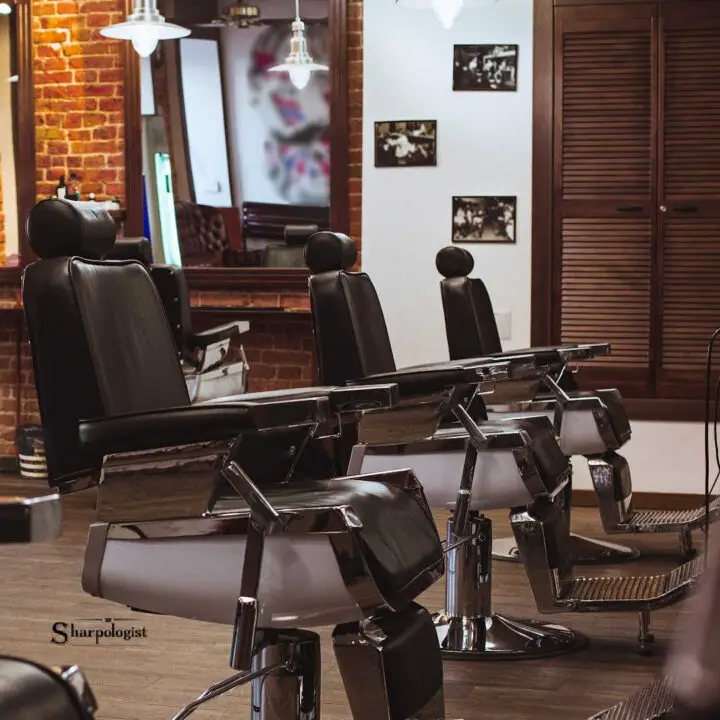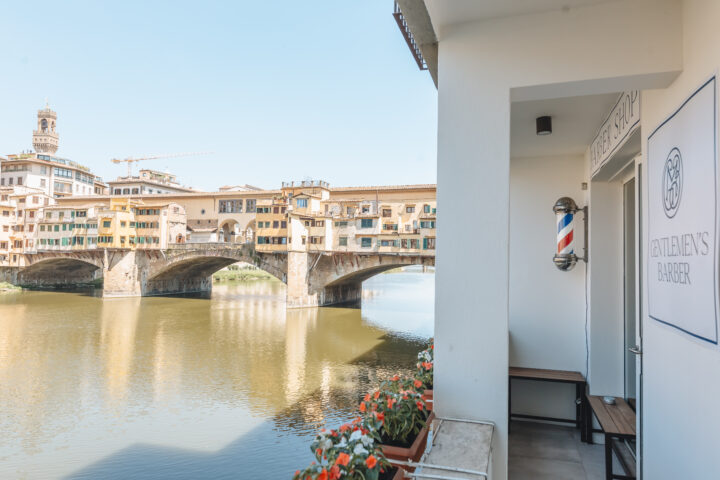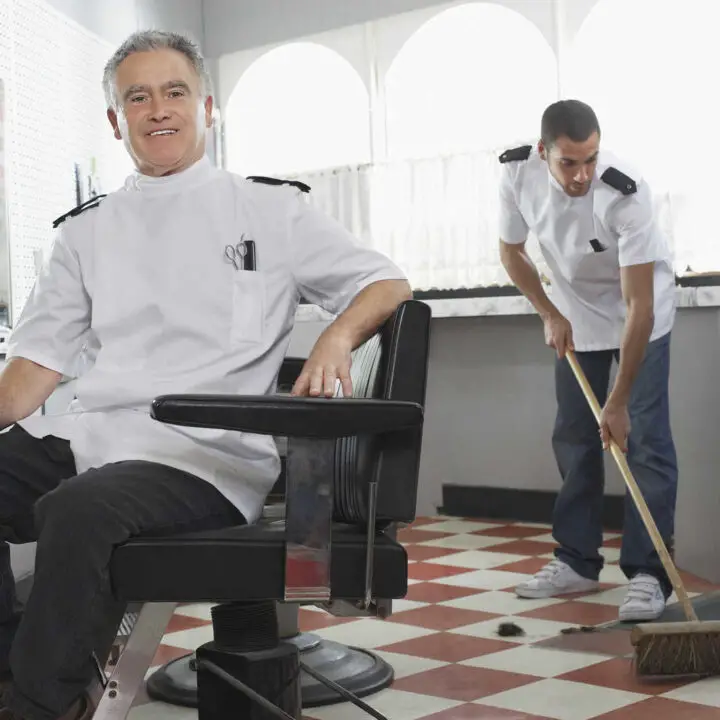Italian barbers vs. American barbers. Here are three ways they differ.
The Same Yet Different
Sure, a barber is a barber no matter where you are. You’ll get your hair cut and maybe your face shaved. The the way it is done can vary quite a bit. Having been through my fair share of barbers in the US (from the “spa”places to the local clip joints) and a sample of Italian barbers (old-timers in the US plus a few in Italy itself), I think I can contrast the two environments into three ideas:
- Time at the shop
- Experience of the shop
- Background of the barber
Let’s take a look at each.
To give some additional perspective I also reached out to some barbers I know for their comments too. Justin is my barber, Jason ran a local barber school, Antonio is a retired barber who moved from Italy to the US a number of years ago, and Luca is the head barber at Mondial Gentlemen’s Barber, an upscale barber in Florence, Italy and birthplace of the Antica Barberia Mondial brand (via an Italian-speaking intermediary).
Spending Time At The Shop
In America, going to the barber is a fairly simple and straightforward experience. You sit down, tell the barber what you want, and they proceed to cut your hair. The attitude according to Jason is basically “get ’em in and get ’em out.” In America, most barbershops are run as businesses. This means that the owners are often focused on making money, and they may not have the same level of care for their customers as Italian barbers do.
Historically Italian barbers, on the other hand, tended to work in family-owned shops. This means that they are more likely to take a personal interest in their customers’ hair and be willing to do more to give them a good haircut.
Justin and Jason tell me the baseline haircut in the US takes about 20 minutes. From what Antonio and Luca say, the baseline is about double that time in Italy.
The Classic Barbershop Experience And Scent
Italian barbers are often more informal and friendly than their American counterparts. This can lead to a more relaxing and enjoyable haircut experience for the customer. American barbers, on the other hand, are often more formal and professional. This can make them seem less warm and inviting to the customer.
In the US I would also say the “barbershop experience” is broadly divided into two groups, what I call the “modern” group and what I call the “neo-traditional” group.
“Modern” barbershops and barbershop franchises use another trend or customer interest as a springboard. Sportclips is a good example of this concept: while you go in for a haircut there are also multiple televisions playing sports broadcasts.
“Neo-traditional” barbershops try to recreate the barbershop experience of (around) the 1950’s. You’ll often see a decorating scheme that includes tile floors and vintage photos or barber tools adorning the walls. Justin says “I think this style predisposes customers to return regularly as a sign of stability in an ever-changing world.”
The scent of American barbershops tends to be a fairly complex one. As I mention in a previous article many predominant scents include talc and Pinaud Clubman, though there are other scents too.
On the other hand the Italian barbershop experience is a largely genuinely traditional one. Many have been around for a long, long time (though World War II was a major upheaval) and ownership passed down to either family or long-time business relationships.
Unlike American barbershops, the predominant scent of the Italian barbershop is usually almond, due to the fragrance of many traditional Italian barbershop products, though talc and citrus scents sometimes sneak in too.
Of particular interest to Sharpologist readers in the barber shave. In the US the barber shave is going to be fairly ‘restricted’ by state or local laws and ordinances. For example you will most likely see an American barber using a “shavette” style razor with a replaceable blade vs. a genuine straight razor. Lather will most likely be from a lather-making machine.
In Italy you are much more likely to see a straight razor and lather built with brush and bowl.
Background
Another key difference between Italian barbers and American barbers is the level of skills that each group of barbers possesses. American barbers, for the most part, are less experienced than their Italian counterparts. Italian barbers, on the other hand, are often better-trained and are more likely to provide a quality service regardless of the customer’s hair type or texture.
Jason mentions that there is a minimum training and experience required to get a barber license in the US, though the actual number of hours vary by state (in the US state I live in, Texas, it’s about 1000 hours depending on variables).
In Italy there are still rules and licensing requirements but “training” has often been an apprentice-like affair lasting years. In Luca’s case:
“My grandfather was a barber with a small shop in Sicily with two chairs and I started learning from him as a boy of six or seven. The barber was part of the daily routine. The same men would come every morning for a shave and maybe only once a month for a haircut. It was the way of life. I was 12 when I give my first shave to a customer because I was finally tall enough to reach over the chair!”
However Luca says this is also beginning to change:
“…so much has changed with men wearing more beards and it is hard to find good young barbers even here in a major city. But it is still an important profession for Italians so we do our best to keep these traditions alive…”
Summing Up
There are several key differences between Italian barbers and American barbers. Italian barbers tend to take their time with each cut, and use higher quality products. American barbers, on the other hand, work faster, and use less expensive products.




As a 38 year veteran lady barber, now retired, only some South Italy/Greece in my DNA … the best barbers were we ladies. My clientele? Flattops to floor length.
Some of THE worst I worked around were loud, rude, NYC and Boston area Italians. Female as well as male. As coworkers as well as lacking in skills. Care for people. Cleanliness. Their personal grooming. Etc….
The worst trait for any background of barber, stylist? Thinking that if they’d ever cut someone’s hair, they ‘owned’ that shop client. And the stress they caused when they would have someone chose another, or any, barber, over them. Not fun. And the true Italian background ones were the best at being obnoxious about it.
A long ago shop owner, along with his wonderful wife, distantly, vaguely Italian on his father’s side. I had the joy of working with. He was a great barber, best personality to go with it.
But he would have told you himself, ‘I’m not Italian. Just my last name is.’
Have I harped on long enough to convince everyone?😄
Mark, I really enjoyed this article about the differences between Italiano versus American barbers. I would love to go to Italy and Sicily some day for a haircut and shave and pasta. However, here in San Francisco, Laz drives his customized van/barbershop near my house. We always talk; he knows my interests;he takes his time and gives me a senior discount. A great deal for me.
Dartan
Mark, I really enjoyed this article.
Dartan